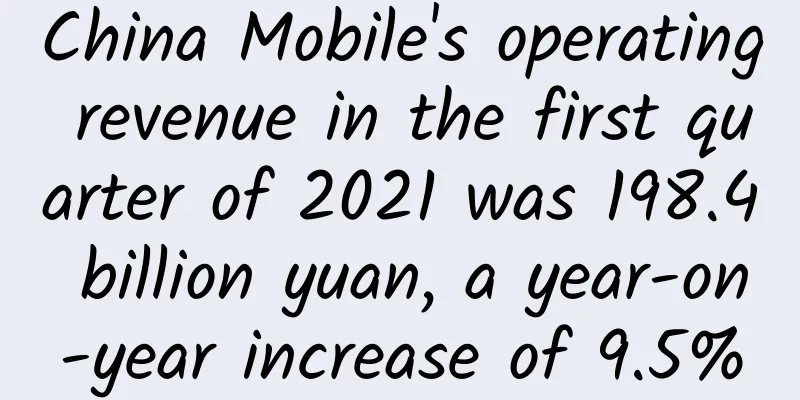Wang Wei of SINO-Info: Five years of CDM efforts have made “using and managing data well” a reality

|
The famous writer Spencer Johnson once said, "The only constant is change itself." For ICT information technology, which is already rapidly iterating and changing with each passing day, this change can be called a subversive revolutionary change. Under the sweeping wave of new digital innovation, data is replacing CPU computing as the new core of IT systems. Resources should revolve around data rather than CPUs, and the importance of data has reached an unprecedented level. If we analyze the data carefully, we can divide it into production data and auxiliary data based on its usage. The former meets business needs, while the latter is used to assist decision-making, development, testing, disaster recovery, and backup needs. Correspondingly, the system that provides storage technology support can also be further divided into primary storage and secondary storage. The former is the familiar all-flash array and cloud storage, emphasizing performance, reliability, stability, etc. The latter is mainly based on CDM (Shangxun Information Agile Data Management Platform ADM product), which mainly emphasizes capacity, disaster recovery, development, testing, data analysis, and data security use (desensitization). For industry enterprises, digital transformation and digital economic innovation are more tested by the challenges brought by secondary storage, such as rapid delivery of massive data, data compliance control, etc. Due to the lack of early application awareness, there was no centralized and effective unified management, which not only led to low efficiency and lack of security, but also high management costs.
But the situation is also changing rapidly. According to Wang Wei, senior product director of the Data Security Product R&D Department of Shanghai Shangxun Information Technology Co., Ltd. (hereinafter referred to as "Shangxun Information"), the CDM "explosion" stage is about to come! DoIT editor-in-chief Song Jiayu conducted an exclusive interview with Wang Wei for this purpose. ADM products win bids frequently In the financial and telecommunications fields, the Agile Data Management Platform ADM of Shangxun Information (hereinafter referred to as "Shangxun ADM") has recently received good news. Has it found a breakthrough in the market? Song Jiayu: Recently, I saw that the official account of Shangxun Information released a lot of good news about ADM products winning bids. Please tell us about the relevant situation. Wang Wei: Shangxun's ADM products are gaining more and more attention and favor from industry customers. Recently, several large city commercial banks and other financial institutions have tendered for and purchased Shangxun's ADM products and services after passing rigorous POC testing. This is a high recognition of the application of our products in the CDM field. Nowadays, the country has raised the level of laws from the introduction of new policies and regulations, with higher requirements and stricter supervision on the application management of data security, data life cycle and other related businesses. The financial industry has adopted a relatively stricter control mechanism. The concept and function of data life cycle management of SINO-SUN ADM products meet the requirements of related applications very well, and can quickly prepare data for test and development work, thereby promoting users to meet the needs of the new generation of data use and management, which is also an important reason for promoting the demand for ADM applications. Song Jiayu: I would like to know what problems or pain points ADM solves for users? What are its main functions? Wang Wei: Through discussions with users including finance and operators, we learned that the pain points of users in development work mainly include: application development, QA, user acceptance, product support, reporting and backup, etc. 8 to 10 data copies are created from the production data source. For example, a 5TB production database often creates 40 to 50TB of data copies for the downstream. Nowadays, users often have more than 100 production databases. With this calculation, the data copies have reached the PB level, which inevitably brings the need for massive data storage and data maintenance management, which is overwhelming for users. Not only that, in the traditional production collaboration process, when developers and testers want to obtain a copy of the data, it often takes several days or even months (depending on the size of the data, environmental preparation, etc.) from submitting the demand application to preparing the system environment. This is not the best way to deal with and process massive amounts of data! Not only does it waste a lot of storage resources, it also brings problems in data compliance and agility, affecting the rapid iteration of user applications. This is unacceptable for users who are pursuing agile transformation and DevOps transformation today. In order to help users centrally manage these massive amounts of non-critical data, especially redundant data copies, CDM technology came into being. The Shangxun ADM product is a typical application of CDM technology. Its main functions include: First, production data backup; Second, verify the validity of backup data; Third, data desensitization; Fourth, extremely fast delivery of test data; Fifth, data access rights management; Sixth, database audit. Song Jiayu: CDM technology has been proposed in the industry for several years. What is the difference between it and traditional backup? Can it replace backup? Wang Wei: Backup is a way for CDM to obtain data. It is more appropriate to use CDM directly to back up the data of the newly built business system, which can activate the backup data while realizing data backup. If the backup system has been deployed, CDM can realize automatic recovery and verification of backup data, which complements the backup system. Traditional backup technology restores data before delivery, and the recovery process is long, while CDM saves data in its original format and can be delivered directly. Compared with backup, CDM is more concerned with the delivery, use and management of data. Data backup is a way for CDM to obtain data. It is a good choice for new systems to use CDM for data backup, data delivery, data desensitization, and data management. For users who have already built a backup system, they hope to see the complementarity and coexistence of CDM and traditional backup. Therefore, another data acquisition method of CDM (backup data management) can achieve complementarity. In recent years, the application of CDM products abroad has become quite popular. It is not limited to backup, but has been widely used in development, testing, data analysis and other fields. In the past two or three years, domestic enterprises have been continuously engaged in this field, but the products of some enterprises are essentially backup products, which are quite different from CDM technology. Simply put, backup is fundamentally a guarantee for data, and can provide users with disaster recovery in the event of a physical or logical failure. CDM focuses on the life cycle management of data, and is a productivity tool that involves the entire process of user data acquisition, data storage, and data use. Song Jiayu: Gartner predicts in its 2020 Storage and Data Protection Technology Maturity Cycle that CDM will enter the "peak of actual production" in the next 5 to 10 years. What is the current development status of CDM at home and abroad? Wang Wei: Over the past decade, CDM vendors have been mainly distributed in North America, including companies like Actifio, Cohesity, Rubrik, etc. In terms of technology trends, they are gradually moving towards data management across data centers and hybrid multi-clouds to meet users' needs for leveraging data copies for value, as well as security and compliance needs. In China, CDM technology has been booming in the financial and operator industries in the past two years. CDM technology has been deployed in test environments, quasi-production environments, and even core production environments to meet the needs of agile data use and data security management. In addition, as industries with extremely high requirements for data security compliance, the application of CDM technology by finance and operators can play a leading role in demonstrating and driving the adoption of CDM in other industries. In terms of regulatory compliance, including this year's National Healthcare Security Administration's "Notice on Issuing Guiding Opinions on Strengthening Network Security and Data Protection Work" and the recent "Data Security Law", both have put forward requirements for the full life cycle management of data, which will promote the wider application of CDM technology. Cultivating new tracks SINOCOM has been working in the new CDM field for many years and has gained a lot of experience. Song Jiayu: As we know, Shanghai Xun released a mature commercial product of CDM, the Agile Data Management Platform (ADM), as early as the end of 2016. From a company focusing on network security to entering the new track of CDM data management, can you introduce your company's considerations and the investment in personnel, technology reserves, and R&D in this field over the past five years? Wang Wei: Data is the oil of the information age, and we are extremely optimistic about the prospects of this track. After years of industry practice, we have also seen some pain points in data copy management for enterprises: for example, efficiency issues, slow data delivery, sometimes it takes 1 to 2 months from application submission, environment preparation to delivery and use of a piece of data; cost issues, data storage costs and labor costs are both high; as well as data security issues, permission control issues, lack of use of backup data, etc. Since its release at the end of 2016, after nearly five years of meticulous development, the company has combined its years of security advantages with CDM technology. Whether in terms of the richness of functions, product stability, or understanding of user business scenarios, Shangxun's ADM products are far ahead in this segment in China. In practice, Shangxun's ADM products have also begun to gradually integrate functions such as backup, data delivery and management, and data desensitization. Based on end-to-end process automation and centralized data management and control, they truly help users realize the value of data. Looking to the future, Shangxun Information's original intention remains unchanged, which is to do its utmost to "use and manage data well". Song Jiayu: Is ADM delivered as pure software or an all-in-one machine? In addition to local data centers, can it be deployed in public clouds? Wang Wei: Shangxun Information is a software company, and ADM is a strategically important software product developed by it. It can be delivered and deployed in pure software mode or in the form of an all-in-one machine. The delivery method is relatively flexible. ADM supports public cloud deployment. Our project at the headquarters of a large domestic operator is deployed on three clouds: Huawei Cloud, China Telecom Cloud, and China Unicom Cloud. Song Jiayu: Can ADM support both structured and unstructured data? Wang Wei: The current main application scenario is structured data, and we will also support unstructured data based on user needs in the future. Song Jiayu: What methods are supported for data acquisition? Wang Wei: We support a variety of data acquisition methods. If the user already has a backup system, we can obtain data from the existing backup system. We can also obtain data from the production environment in real time, and we can also upload script backup data by ourselves. Impacts, changes and challenges We all know that opportunities and challenges coexist, but it is not easy to grasp them. There are market factors, such as concepts and habits, as well as the impact of future technologies, such as containers/cloud native, information technology innovation and other technologies. Song Jiayu: Will the combination of ADM and containers be a good solution for users? Wang Wei: That's true. Compared with traditional virtualization technology, container technology is lighter, easier to implement dynamic migration and settings, and faster from development to production. Using containers, you can quickly build an application environment, and the Shanghai Xun ADM product can quickly deliver the required data, thereby accelerating the delivery and use of the application environment. Song Jiayu: What are our main application industries and application scenarios? Why do we focus on this? Wang Wei: The main application industries are finance and operators, and the application scenarios are mostly development and testing scenarios. These two industries have large amounts of data, more demands for data utilization, and higher requirements for data security and compliance. With the introduction of the Data Security Law, more and more industries will focus on the safe and controllable management of the data life cycle. In the future, industries such as medical care, education, media, and government are likely to increase their investment in CDM applications. Song Jiayu: What do you think is the biggest competitive advantage or "moat" of ADM's product? Wang Wei: Currently, some manufacturers in the market emphasize data acquisition capabilities and prefer backup products in terms of product form. For Shangxun Information, backup is only one of the means of data acquisition. In the data acquisition process, data can be acquired from the user's existing backup system, from the production environment in real time, or by users uploading data by themselves in the form of scripts. Shangxun's ADM products are still based on CDM technology, realizing the full life cycle management of data from data acquisition, data storage, data construction, data use, data archiving to data destruction. Song Jiayu: Can you introduce the current application cases and the general deployment scale? How is the user repurchase situation? Wang Wei: China CITIC Bank, China Tower, Shanghai International Port Group, China Fortune Securities, Huatai Life Insurance, etc. are mainly high-value users in the financial and operator industries. Users can start with a small scale and a few nodes, because this product really solves many of their data usage and management problems. The user stickiness of the product is particularly high, and the node scale will continue to expand to meet more scenarios and larger-scale usage needs. The customer repurchase rate will be particularly high. Most users have completed the second phase of the project, and some users have completed the third phase of the project. Song Jiayu: How do you consider the future development direction of this product? Wang Wei: In terms of the geographical location of deployment, in the future, it can support cross-local data centers, edge and multiple public clouds, and safely provide backup, recovery, analysis, compliance, and rapid delivery and management of data; in terms of process, it can more seamlessly connect the entire life cycle of data for secure and unified management; in terms of function, it is the tight coupling and strong association between Shangxun ADM products and vertical application scenarios. For example, in the development and testing scenario, can all development and testing operations be run based on a set of data platforms without the need to use additional third-party platforms, such as test version control, to reduce additional resource consumption and improve development and testing efficiency. Song Jiayu: Are Shangxun's ADM products compatible with Xinchuang? Wang Wei: ICT is an important development strategy of the country and a new driving force for the country's economic development under the current situation. Under this development strategy, in 2020, "new infrastructure" has been fully launched, ICT projects in various places have begun to be rolled out on a large scale, and the ICT industry has gradually developed into a phenomenal outlet for the industry. As a domestic enterprise that insists on independent research and development and product safety and controllability, Shangxun Information will certainly respond positively and organize forces to do the corresponding work. The main application markets of SINOCOM's ADM products are in the financial and operator industries. These two industries have overwhelming requirements for business continuity and stability in their applications, especially at the basic software and hardware level, where the core technology products of international manufacturers have always occupied a monopoly position. However, information innovation involves infrastructure to application architecture, and there are potential risks in the transformation at all levels, and the risks of security and stability are significant, which leads to high overall requirements and great difficulty in information innovation in these two industries. Shangxun's ADM products have currently achieved actual compatibility and adaptation in user environments with domestic databases including Sequoia, StarRing, GoldenDB, OceanBase, and Inspur. Other domestic databases and operating systems are also continuing to be compatible. In the face of opportunities and challenges brought about by information technology changes, Shangxun Information will invest more resources in applied technology innovation and core technology innovation, actively practice innovation-driven development, and promote the scientific and technological development of national information security. |
>>: A must-have for interviews! 15 classic questions about TCP protocol!
Recommend
Gcore (gcorelabs) Japanese VPS simple test
The tribe has shared G-core product information s...
[5G Encyclopedia] The mysterious relationship between parameter sets and numerology
When I first saw the word "Numerology" ...
5 must-have software tools for software-defined storage
When considering storage and management of a comp...
5G Massive MIMO Says Goodbye to Power-hungry 5G Base Stations
The attacks on the large-scale construction of 5G...
Mellanox sold more than 2.1 million Ethernet cards in the first three quarters of 2018
Mellanox increases its market share in high-perfo...
Investigating the environmental and social impacts of 5G technology
The emergence of 5G technology has the potential ...
Learn the network protocol stack in ARM-uboot from scratch
[[401440]] Network protocol stack in uboot The ne...
Attention! Eight pitfalls in managing integrated cabling systems
After nearly 20 years of development, the integra...
Crowd selection and data service practice based on MaxCompute + Hologres
Basic logical architecture of the crowd selection...
Edge computing and fog computing explained
By processing data at or near the source of the d...
Network transformation in the era of big technology
Technology is always evolving faster and becoming...
Huawei and TestBird sign a memorandum of cooperation to promote the development of cloud testing ecosystem
[September 11, 2017] On September 7, during HUAWE...
Aruba Again Named a Leader in Gartner Magic Quadrant for WAN Edge Infrastructure
September 22, 2021 – Aruba, a Hewlett Packard Ent...
SPI subsystem SPI spec
1.SPI hardware SPI: Serial Peripheral Interface, ...
Standard Interconnection Lightweight Cloud Promotion, Hong Kong CN2 Yearly Payment Starting from 268 Yuan
Pesyun (Standard Interconnect) has released the l...









